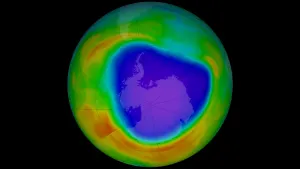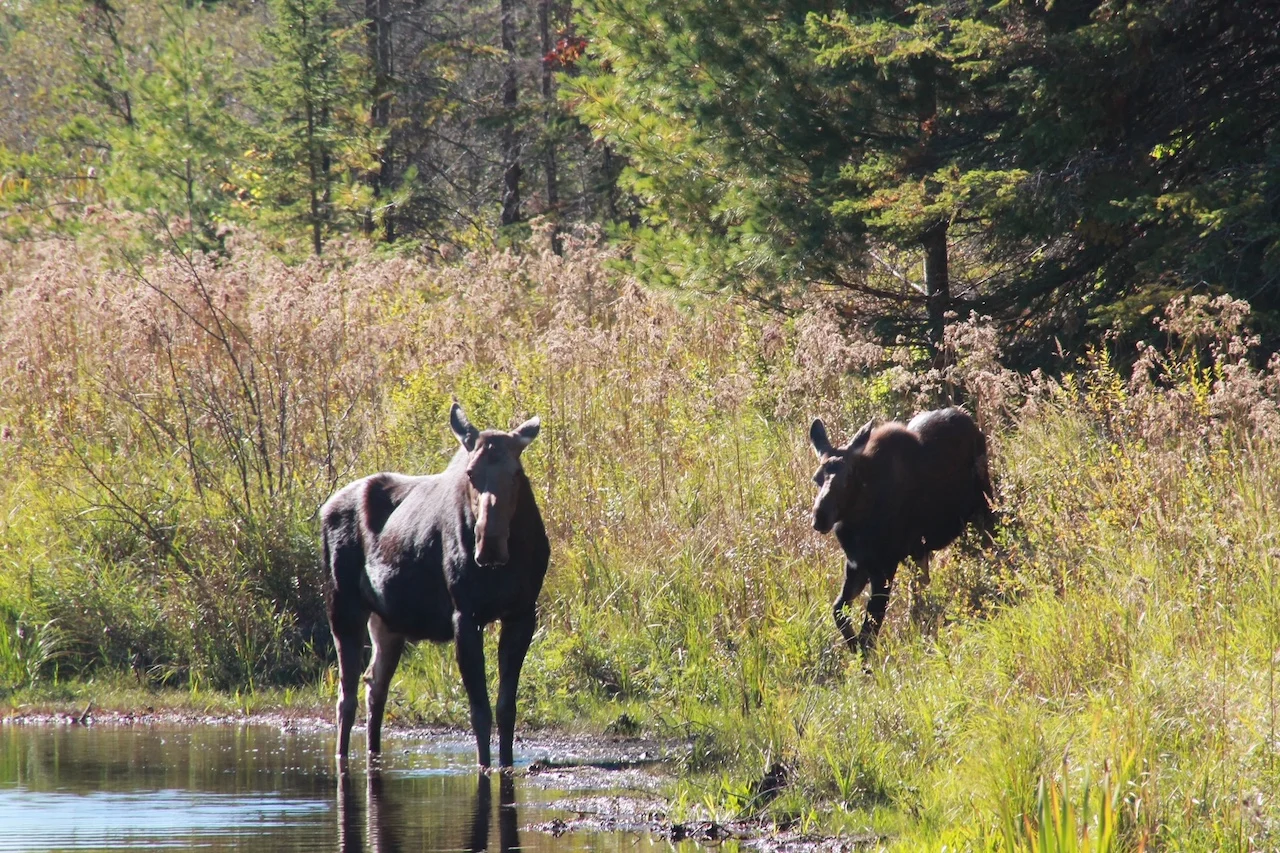
How and where to go on a safe quest to see wildlife in Canada
Looking for and seeing wildlife can be quite the memorable experience, but it can also put you and the animals in harm's way if you don't put safety, and distance, first.
Canada is fortunate to have such majestic landscapes filled with bountiful wildlife. Even in urban centres, you are almost certain to find some kind of animal in sight at every corner.
If you're looking for a specific species, you can visit particular habitats where you're most likely to see them. However, there are protocols you should follow if you plan on seeking them out in the wilderness.
MUST READ: 6 long weekend must-haves for parks, picnics and camping
One of the important elements to the quest is to conduct yourself in a respectful and safe mannner around animals, said Clayton Lamb, wildlife scientist with Biodiversity Pathways and the University of British Columbia (UBC), in a recent interview with The Weather Network. He works on human-wildlife interactions in southeastern B.C.
"Wildlife, obviously, can be dangerous, but they're generally quite safe. It's probably easy to say that the environments, you know the weather and the landscapes, are still more dangerous than the animals themselves," said Lamb. "People are more likely to fall off a cliff or get exposure to hyperthermia than get attacked by a wild animal."
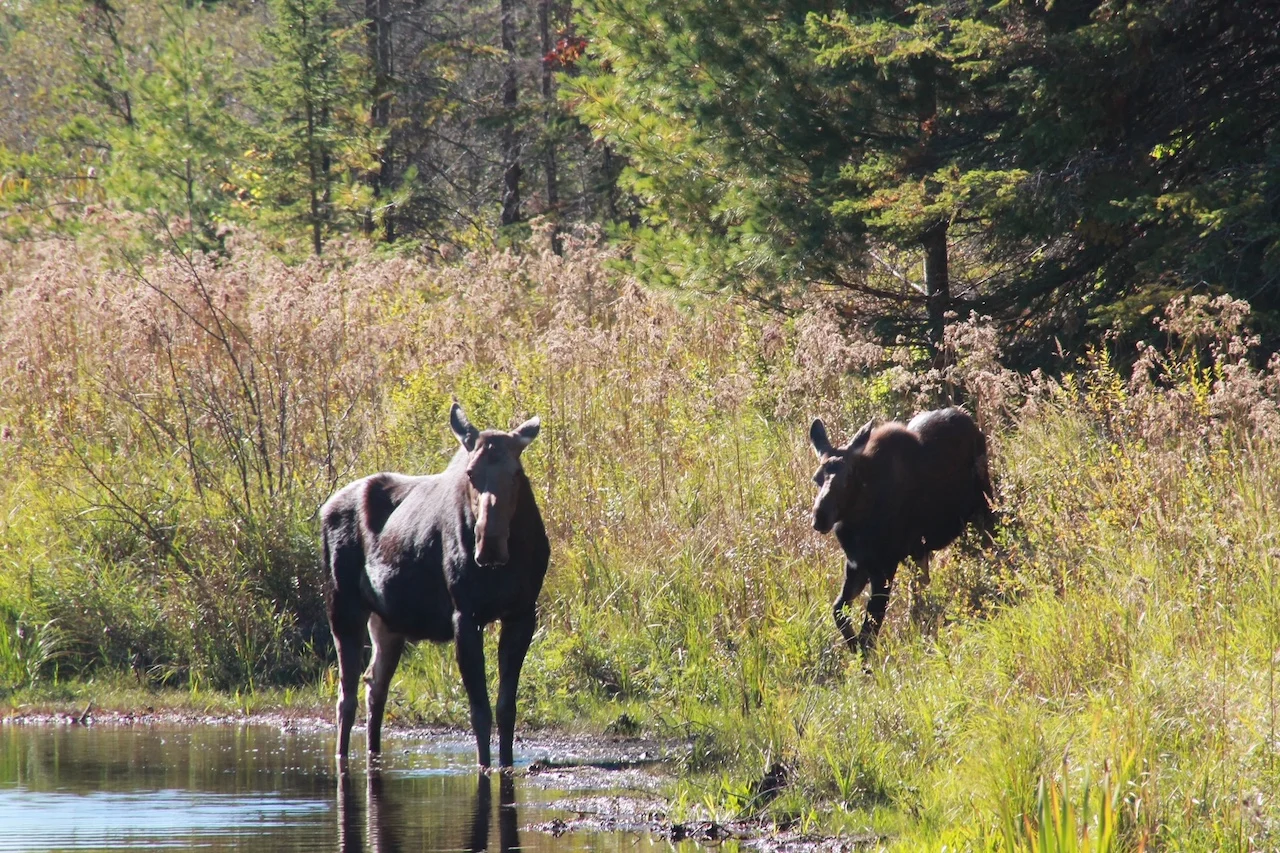
(Warren Howes)
100 metres is a safe distance
But when venturing out into the great outdoors for an animal viewing, safety includes appropriate distances. While an exact measurement away from an animal varies by species, a general rule of 100 metres is a safe distance. "Like a football field sort of idea," Lamb said.
"It obviously doesn't provide the distance that you can get a nice cellphone picture of or a selfie with a moose. But those aren't really the kind of interactions we actually want to be having with wildlife," said Lamb.
In addition to the safety risk of becoming too close, in some cases it is illegal to come within a specific distance of wildlife, especially marine species.
However, if you found yourself a little bit too close for comfort with "what we think of" as a potentially dangerous animal such as a grizzly bear, Lamb suggested you can slowly try to walk away or make the animal aware that you're there so you don't scare it, and just back away.
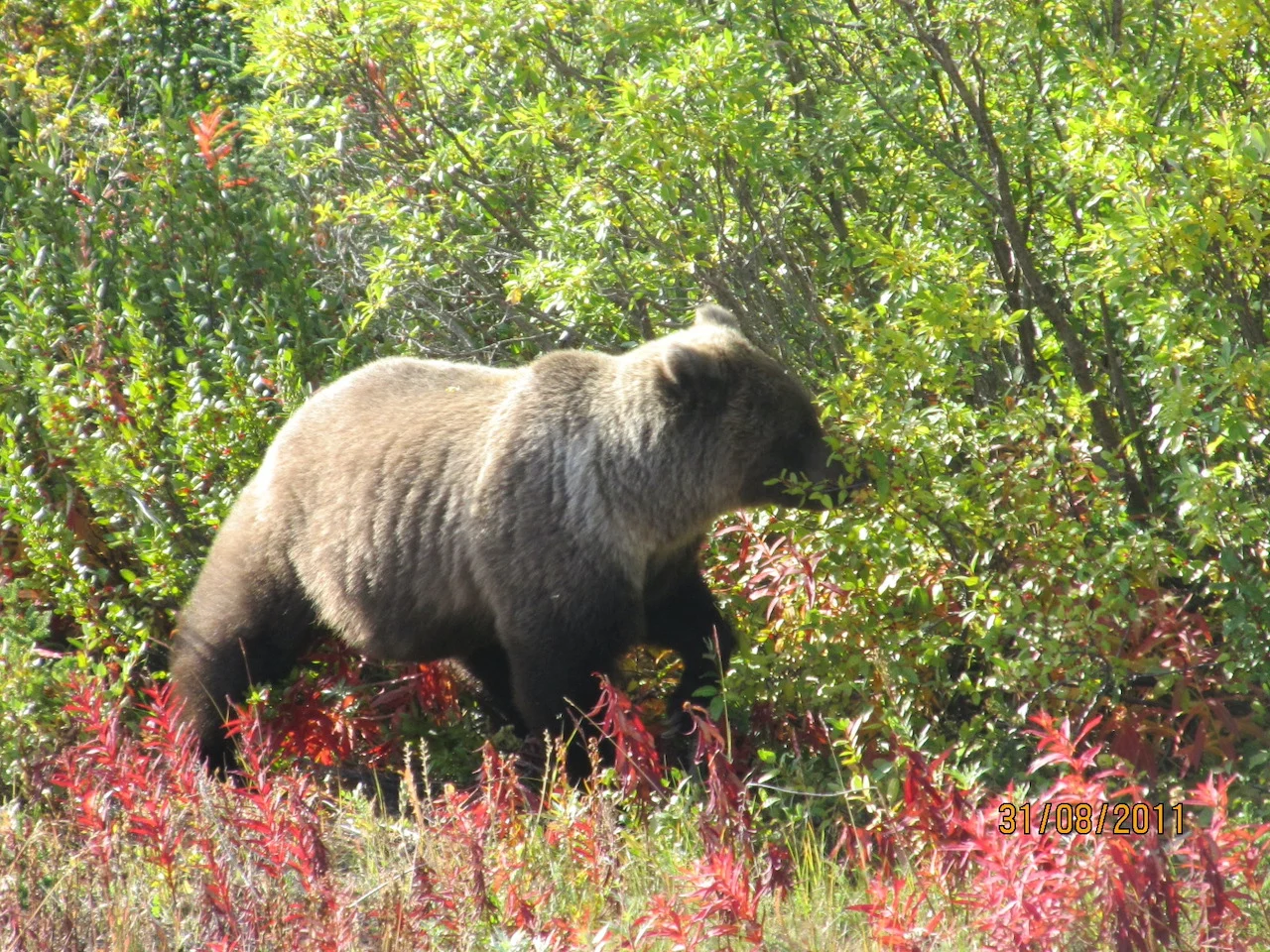
(Warren Howes)
But if it's not a particularly dangerous animal, like a deer, and you are stationed somewhere in a safe spot while it is walking near you, you don't have to immediately get up and "run back to 100 metres," Lamb added.
"If it happens to be walking, say within 50 metres of you along a river and you're there, then that's OK. We don't want to be going out and seeking closeness to the animals, especially when it violates their comfort zone," said Lamb.
The right and wrong way to take photos
Many of the crisp photos of wildlife people see online or in print publications are taken through telephoto lenses from great distances, Lamb noted.
"Folks can even get a cheap pair of binoculars to get [their] viewing distance a little bit closer. But, generally, we want to stay in at least 100 metres away from from wildlife," said Lamb.
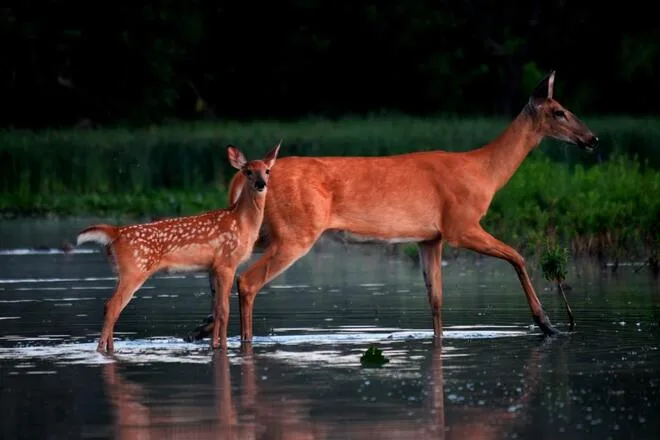
(Klaus Joerg)
He said social media and smartphones have "challenged" the relationship between humans and animals because people want to post photos on Twitter or Instagram, for example.
"It's good that we do document those moments we spend in nature, [but] we don't want to do it at the cost of animals' safety and their well-being," said Lamb.
Snapping wildlife photography can be enjoyable, but there are ethical and unethical methods to it, according to Seth Macey, a Canadian nature photographer who spoke to Cheryl Santa Maria, a digital reporter with The Weather Network, in a recent interview.
SEE ALSO: How wildlife corridors can reconnect Canada's fractured habitats
The ethical approach to trying to take photos may require you to be incognito while waiting to see animals appear, ensuring they don't even know you're there, Macey said.
But making loud noises to get birds to fly or getting too close and chasing them are unethical approaches and can be harmful, he noted.
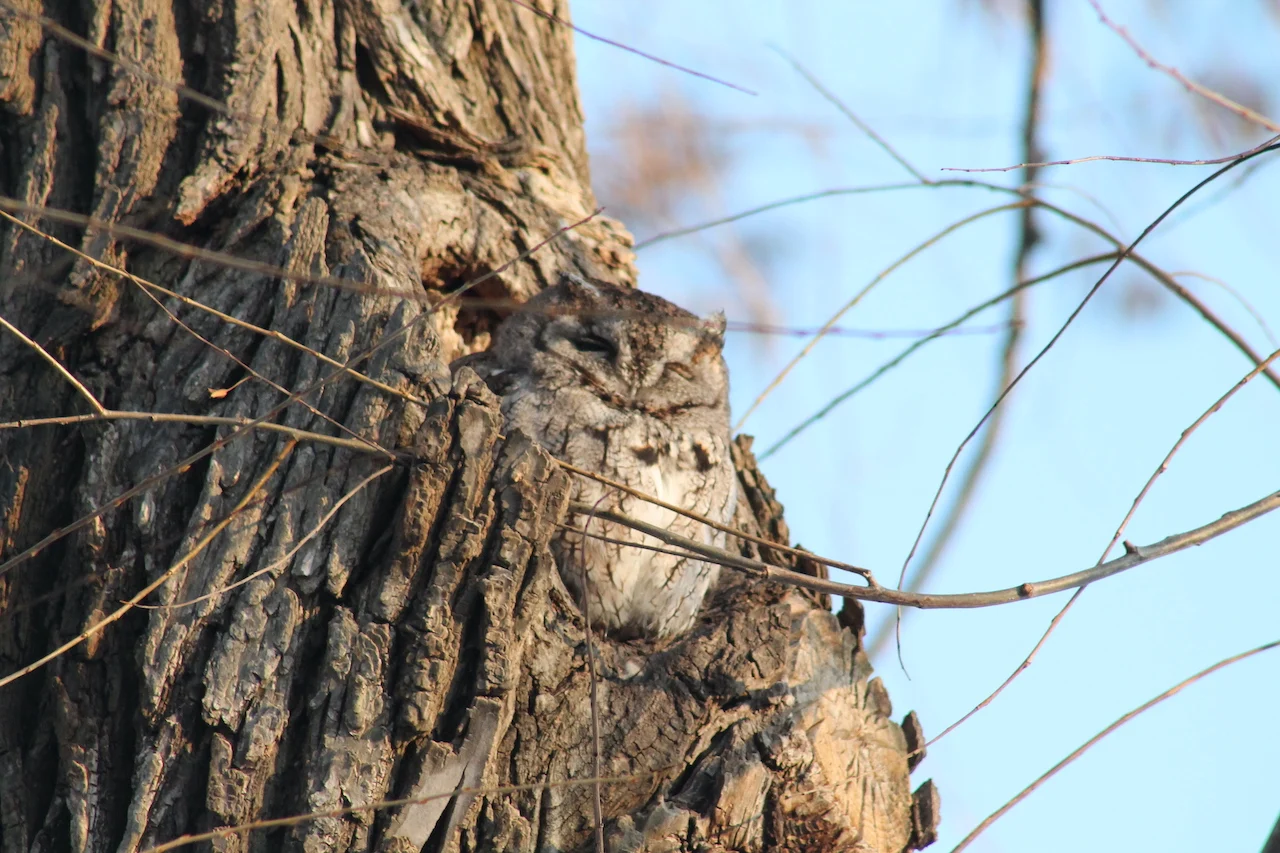
(Warren Howes)
"People forget that a lot of these birds are migratory. You're wasting their calories and their energy that can be spent feeding [their] young, making sure they have enough nutrition to fly their routes," said Macey.
In addition to trying to coax animals for photography purposes, feeding wildlife is also a no-no as it teaches them to rely on humans.
"Essentially, animals should be afraid of us. They shouldn't come near us [and] they should be observed from a distance," said Macey. "They shouldn't begin to rely on us for their survival. If they're having to do that it's unethical."
Besides preventing wildlife from feeding, you could accidentally cause a mother to separate from her young as she darts back-and-forth across the highway, for example, disrupting their migration, too, Lamb said.
WATCH: Police warn residents to stop doing this with moose
Avoid stopping on the roads to see animals
Often times when an animal is seen roadside, people will stop on the shoulder and get out of their vehicles to get a closer view. This occurs frequently in parks, where wildlife inadvertently draw the attention of a large crowd of motorists. This can be dangerous for the onlookers and the animals, Lamb said.
For example, there are "bear jams" in Rocky Mountain parks where traffic comes to a full stop when an animal appears, he added.
"If somebody's getting out of their vehicle and harassing the bear, and the bear happens to react, it always ends up that the bear is the loser in that situation," said Lamb. "The bear might be euthanized as a result of aggression towards people, even though it wasn't necessarily the bear's fault, per se. It was provoked."
Where to see wildlife in a responsible manner
As for what locales you should be seeking out, Lamb recommends productive habitats such as those with lush-green grasses, riparian areas and those near rivers and lakes. The more open and productive spaces will attract a lot of animals that come to mind such as bears, moose and sheep, just to name a few.
"They obviously have some of the viewing opportunities that we're seeking. Even folks out paddling, for example, on a lake...the more remote lakes [offer] a lot of good habitat in there," said Lamb. "You can observe from your canoe in safety and watch animals on the land, feeding either on the land or right on the edge of the lakeside there."

(Warren Howes)
As well, when you are out in the wilderness to enjoy the scenery and/or wildlife, it's important to keep the surrounding environment intact by limiting your footprint as much as possible, Lamb said, promoting the concept of leave no traces behind.
"Try to be respectful of that landscape and conduct [yourself] in a way that's consistent with maintaining what we love about it," said Lamb.
"We always want people to kind of get out and experience a landscape as the animals experience it. Hopefully, folks can observe animals in some tranquility and help them preserve that tranquility, too, by staying at a safe distance."
WATCH: Evidence shows Canadian conservation efforts are paying off
Thumbnail courtesy of Warren Howes.
With files from Cheryl Santa Maria, a digital reporter at The Weather Network.
Follow Nathan Howes on Twitter.








